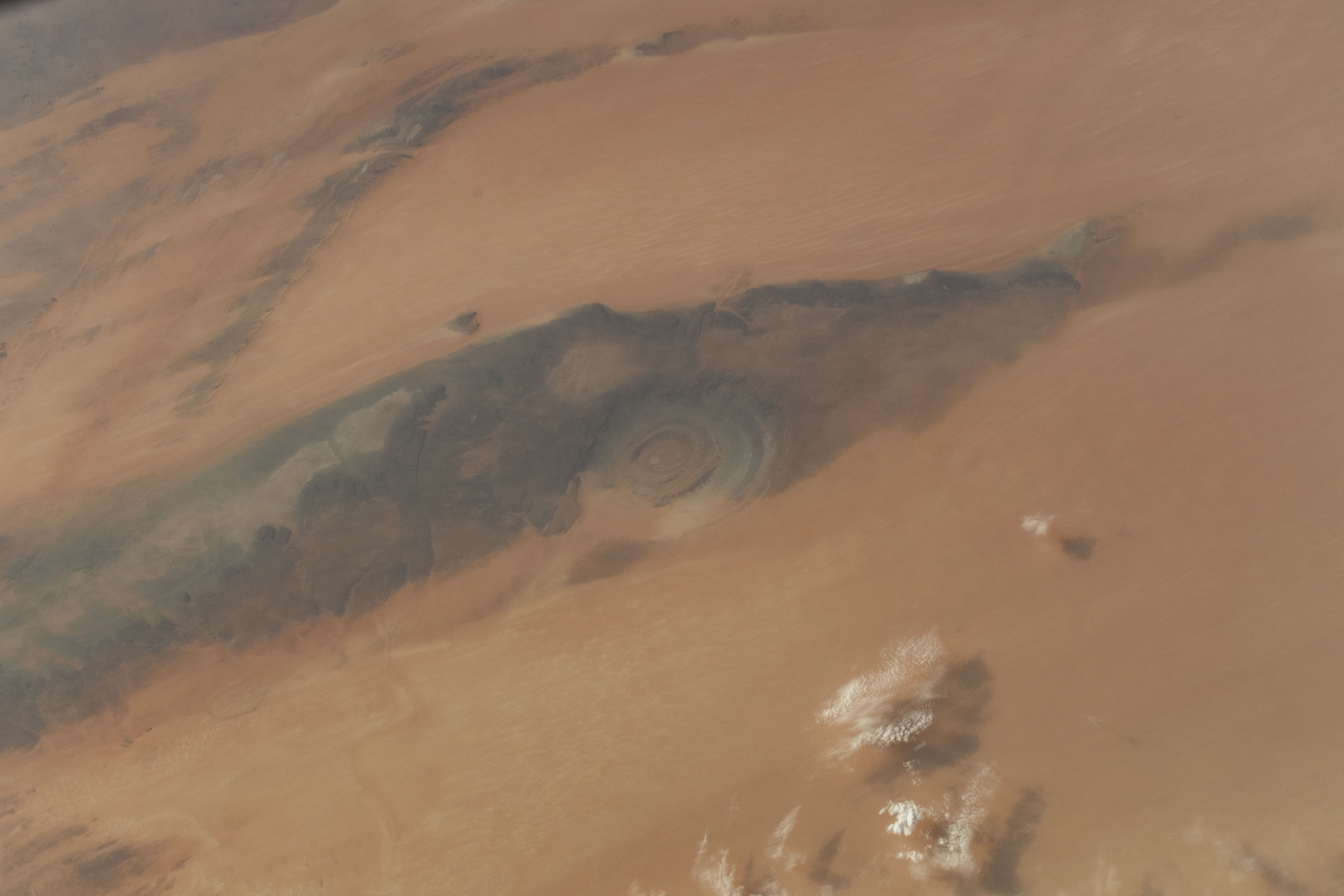Some things just look better from up in space, which is a tad unfortunate given most of us can’t get up there. Luckily, the fortunate few who venture outside Earth love to snap a few pictures of their view and share them with us – and that’s how we get to see these brand-new photos of the mysterious Richat Structure.
The images were taken aboard the International Space Station (ISS) on July 17, 411 kilometers (255 miles) above the Earth, looking down on Mauritania in Northwest Africa. The Richat Structure, also known as the “Eye of the Sahara”, lies in the north of the country in the arid Adrar Plateau.
As viewed from the ISS, it’s easy to see where the 40-kilometer (25-mile) geological feature gets its nickname from; its concentric rings really do give off the appearance of an eye, and a large one at that.
Sadly not the eye of a giant hidden underneath the ground.
But whilst it might look like the eyeball of a giant creature staring up into space, the structure isn’t proof that Eternals was actually a documentary – no emergence of an unborn Celestial here, thank you very much. That being said, the Richat Structure’s origin was hotly debated for a long time, and some theories did in fact involve a visitor not of this world.
Less “little green men” vibes and rather more rocky, that visitor was thought to be a large meteor, as impact events typically leave behind similarly circular features after they smack into the Earth’s surface.
Then came along a 2014 study that supported an entirely different proposal – the structure had emerged from goings on inside the Earth, not from elsewhere. Specifically, what’s known as an intrusion of magma pushed the rock up to form what’s called an uplifted dome or domed anticline.
Over time, the different types of rock making up the upper part of the dome – igneous and sedimentary – eroded at different rates, leaving a series of circular ridges with a steep slope on one side and a gentle one on the other, known as cuestas.
Some people have also proposed that the Richat Structure is actually the site of the lost city of Atlantis, but let’s be honest – magma forcing the ground above into a dome is the only real possibility out of those two options.
In fact, volcanic activity is responsible for forming more than just one body part lookalike in the Sahara. Over in Chad, a mixture of towering black cinder cones and a layer of natron give off the rather uncanny appearance of a giant skull.
Source Link: Stunning New Photos Of The “Eye Of The Sahara” As Seen From The ISS
